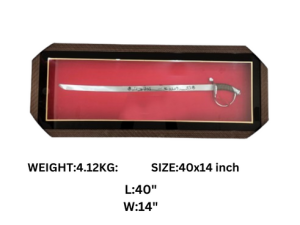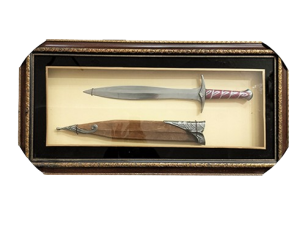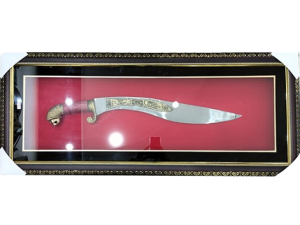In Pakistan, as in many other regions, there is a rich history of traditional sword-making with various designs influenced by cultural, historical, and regional factors. Here are descriptions of some traditional sword designs found in Pakistan:
Pesh-Kabz:
Description: The Pesh-Kabz is a traditional Afghan and Pakistani knife or short sword with a double-edged, straight blade. It typically has a distinctive T-shaped hilt, allowing for a secure grip. The Pesh-Kabz is known for its effectiveness as a stabbing weapon.
Churika (Churea):
Description: The Churika, also known as Churea, is a traditional knife or short sword with a double-edged blade that gradually curves towards the tip. It is often associated with the Khyber region of Pakistan and is known for its unique, angular design.
Talwar:
Description: The Talwar is a traditional curved sword with a single-edged blade that features a significant curve. It often has a distinctive hilt with a knuckle guard. The Talwar has historical significance and is associated with various South Asian cultures.
Khyber Knife (Khyber Pass Sword):
Description: The Khyber Knife is a type of sword associated with the Khyber Pass region, known for its straight, double-edged blade with a slight curve. The hilt design can vary, but it often features a simple guard and a distinctive pommel.
Kirach (Kilij):
Description: The Kirach, influenced by Turkish and Persian designs, is a type of sword with a slightly curved, single-edged blade. It often has a distinctive hilt with a guard that curves towards the blade. The Kirach may vary in size and design.
Shamshir:
Description: The Shamshir is a Persian-origin sword that gained popularity in South Asia, including Pakistan. It is characterized by its deeply curved, slender blade and distinctive hilt with a crossguard that typically curves away from the blade.
It’s important to note that these descriptions provide a general overview, and there may be variations in design based on the craftsmanship of individual swordsmiths and the specific cultural influences in different regions of Pakistan. Additionally, the historical context and usage of these swords contribute to their unique designs.
-
Home Decor, Sword Frame in Different Designs
Frame Tippu Sword without Cover
$18.00Add to cartQuick View -
Home Decor, Sword Frame in Different Designs
Sword Frame Different Designs
$56.00Add to cartQuick View



